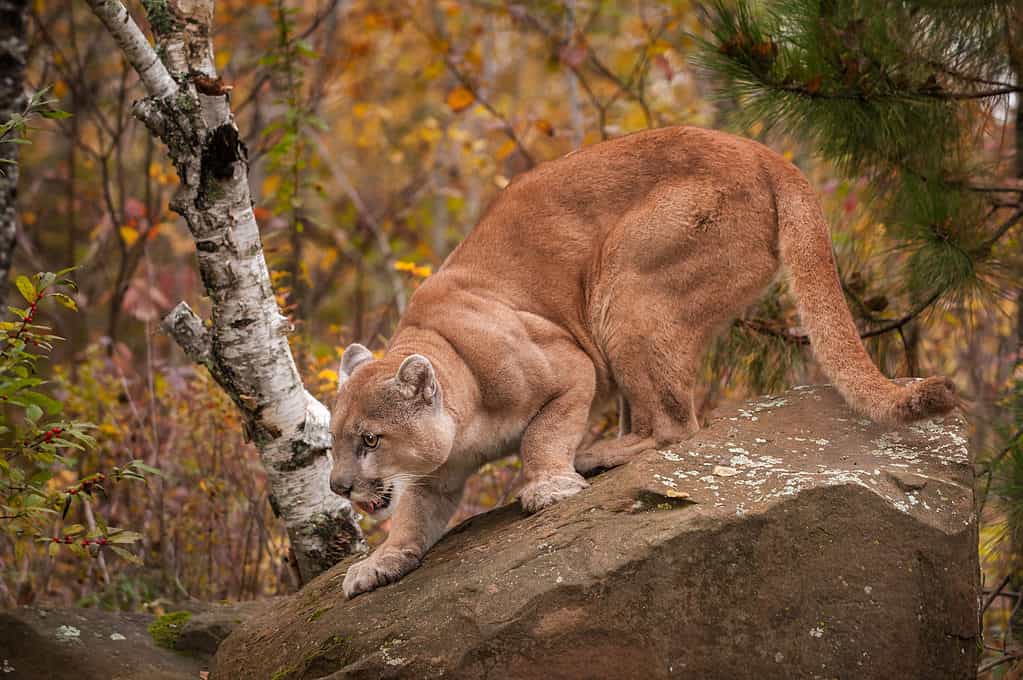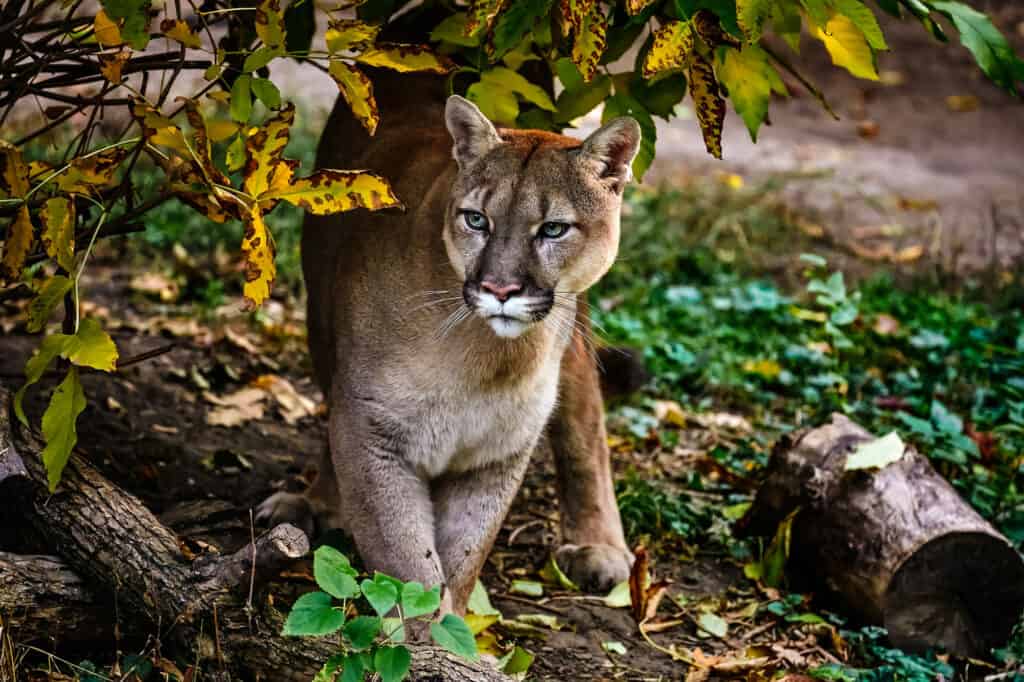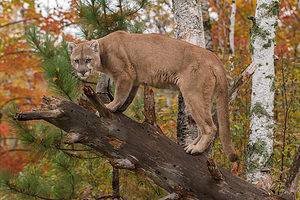Imagine biking through the mountains and being knocked to the ground by a cougar! For one mountain biker, that recently became a reality. This article will describe the cougar attack, where it happened, and the consequences that followed.

Cougars, also called
mountain lions
, are widespread in the Americas.
©Kwadrat/Shutterstock.com
After a terrifying encounter with a cougar, mountain bikers in Whistler, Canada are on edge. A biker was knocked off their bike when a cougar leaped on the bike’s back wheel. The animal proceeded to stalk the rider for an additional 15 minutes following the collision. Luckily, the cyclist is safe and unharmed. On August 24th, 2023, however, many trails were closed due to the incident as a precautionary measure. The encounter occurred near the intersection of Flank and 19 Mile Creek trails.

Mountain lions are large cats with males weighing up to 220 pounds.
©Holly Kuchera/Shutterstock.com
The Resort Municipality of Whistler provides the public with information on cougars and what to do in the case of an encounter. First, stay calm and keep the cougar in view- do not turn your back and run. Ensure the animal has a clear avenue of escape by backing up slowly. Pick up any children immediately but avoid crouching.
If a cougar stalks you, respond aggressively by maintaining eye contact, baring your teeth, and making loud noises. If the cougar attacks, fight back. Use any object available as a weapon and strike the animal’s face and eyes.
Where Do Cougars Live?
Cougars, also known as mountain lions or pumas, have an extensive geographic range that stretches across the Americas. They are widespread, living everywhere from the southern tip of South America to the northern regions of North America. They inhabit a diverse array of habitats due to their adaptability and wide-ranging behavior. In North America, cougars can be found in various landscapes, including forests, deserts, mountains, and grasslands. Similarly, in South America, they occupy a range of environments, from tropical rainforests to arid scrublands.

Cougars live throughout the rocky mountains including in Colorado, where there is a population between 3,800 and 4,400 mature individuals.
©Nyker/Shutterstock.com
In North America, cougars are often associated with rugged terrain, making their homes in mountainous regions such as the Rocky Mountains, the Sierra Nevada, and the Andes. These animals are highly skilled climbers and are equipped with powerful limbs and sharp claws, allowing them to navigate steep slopes and rocky terrain with ease. Forested areas also provide them with ample cover and prey opportunities. They are known to establish their territories in these regions, which can be a significant expanse of land, depending on the availability of prey and suitable habitat.
How Frequent Are Cougar Attacks?

Cougars are not seen frequently and rarely attack humans.
©Evgeniyqw/Shutterstock.com
Cougars are generally elusive and solitary predators that tend to avoid humans. However, there are occasional instances of cougar attacks on humans, although they are relatively rare. In North America, there are only a handful of cougar attacks reported annually. The actual number varies from year to year and across different regions, but according to the U.S. Geological Survey, there are approximately 4 to 6 per year. These incidents often receive significant media attention due to their rarity and the sensational nature of human-wildlife encounters.
When cougars do attack humans, it’s important to note that the reasons behind such incidents are complex and can vary. Predatory behavior towards humans is not the norm for cougars; they typically prefer to hunt and consume their natural prey, such as deer and smaller mammals. Cougar attacks on humans are often a result of a combination of factors that might include the cougar feeling threatened, injured, or cornered. In some cases, young and inexperienced cougars might be more likely to make mistakes in their assessment of potential threats.
Furthermore, factors such as habitat encroachment and changes in prey availability can influence cougar behavior and interactions with humans. As humans expand into cougar habitats, there can be greater chances of encounters. To mitigate these risks, education, public awareness, and responsible outdoor practices are crucial. Understanding cougar behavior, avoiding areas with signs of their presence, and taking precautions when hiking or camping in cougar country can significantly reduce the likelihood of negative interactions between humans and these majestic predators.
The photo featured at the top of this post is © Jim Cumming/Shutterstock.com
Thank you for reading! Have some feedback for us? Contact the AZ Animals editorial team.






